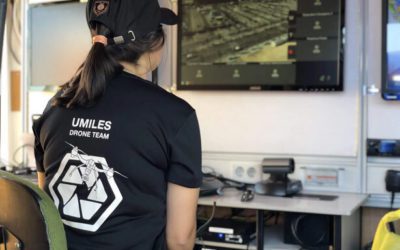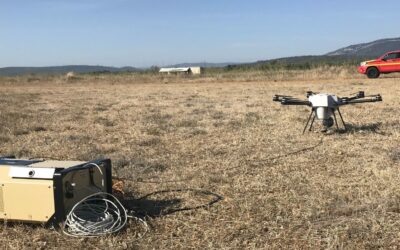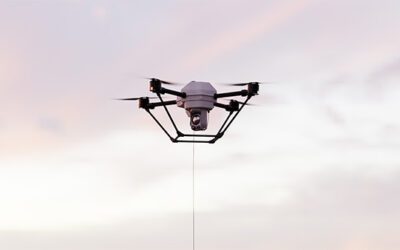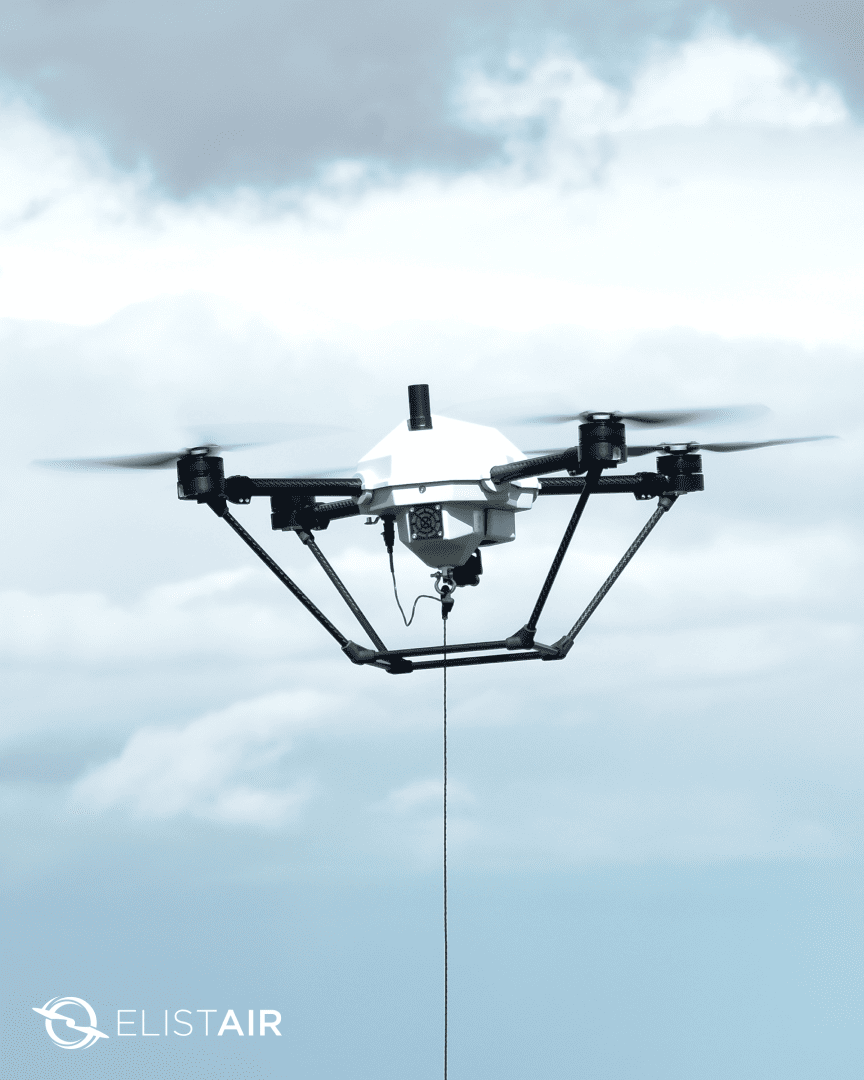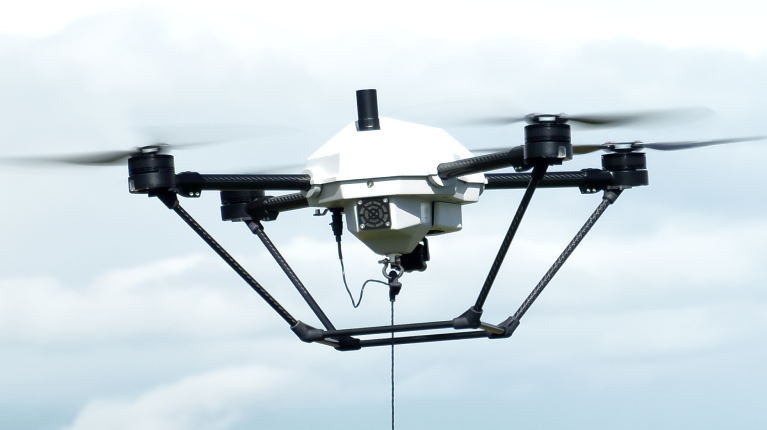Considerations in Selecting a Tethered Drone Station
Elistair Team
4 minutes
Battery-limited flight time and the need for risk-free operation have become major challenges for keeping pace with the increased use of micro-drones for observation, data collection and telecommunications, particularly for law enforcement, civil protection, private security companies or industrial groups. Tethered drones, and more specifically tethered drone stations, are the ideal solution, combining durability, security and flexibility.
Selecting a field-proven tethered UAV solution is a complex choice and may become a major issue when choosing a “mission-critical” tethered drone, mainly for the purpose of maintaining public order, crisis management scenarios, or emergency telecommunications, when the tethered drone deployed is a critical factor in the decision chain.
The following scenarios are concerned:
– sensitive site monitoring
– firefighting situational awareness
– crowd control
– harbour security
– event surveillance
– border surveillance
– anti-poaching patrols
– ad-hoc network
– tactical radio relay
– emergency telecommunications
How do you choose the ideal tethered drone for your missions? What are the critical points to verify before investing?
Performance
Performance of a tethered station mainly relies on the area covered by the user. For surveillance and telecommunications missions, this area directly depends on the available payload and flight altitude of the tethered drone.
Actually, heavier available payloads improve the quality of the on-board camera or increase the relay station power. Higher altitude flights also allow for rapidly covering larger areas; providing unobstructed view to minimise hidden areas and expanding the range of the on-board antenna. The station weight/power ratio, and the average and peak power delivered to the drone are key parameters that will determine the available payload and the flight altitude of your drone.
Compatibility with your drone
If you already have a drone, first check that it is compatible with the tethered station you are considering. The on-board module must be designed to be as lightweight and compact as possible. A light umbilical shall allow you to obtain a payload approximating the drone’s payload when running on battery power. The tethered system must be capable of supplying the average power required for the proper functioning of your drone and must be capable of absorbing power peaks in high winds or during take-off and landing phases.
Strength and durability
The station is likely to be used for field operations, most often for critical missions and in emergency conditions. Therefore, it must be operational in all types of sites, outdoor conditions (wind, rain, dust) and for different flight times. As a key element of your observation system, your station must feature a resistant and durable design to guarantee power supply, data transfer and secured flights.
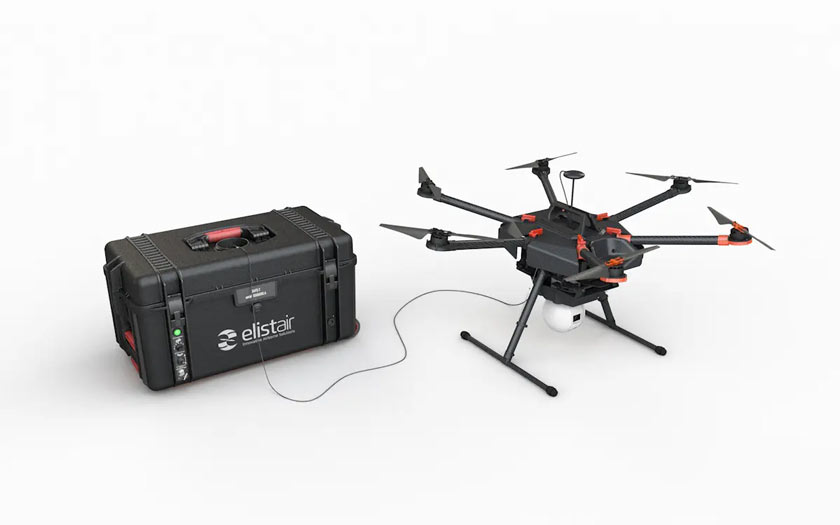
Equipment and operator safety
Your tethered drone station should perform several key functions: ensuring a high-level of safety, reliability and redundancy to guarantee the safety of your drone and sensor, as well as the surrounding structures and people. The micro-tether need to offer a strong and unhackable datalink between the drone and the ground station (control-command and camera feed) and physical “geofencing” of your tethered drone. Check the reliability of the tethered station (redundancy, user protection), the possibility to secure your data through the micro-tether (anti-hacking, unjammable and interference-proof), the mechanical strength of the micro-tether as well as the compliance of the system with civil aviation laws
Tethered drone stations purpose is to be used on long durations. To ensure that the operator gets a good level of information and understanding on its tethered flight, the station needs to integrate live monitoring features (record and transfer a number of key data in real-time).
Easy-to-use
Your tethering station must be easy-to-use: simple and intuitive user interface, (connections, deployment and use). Quick disconnection to switch from tethered flight to free flight is a key operational feature.
The automated and smart winding system is essential for practical operation and long-term protection of the micro-tether at different altitudes: check that the winding system features different modifiable pre-configurations (depending on the type of drone, the weather conditions, etc.), that refined control laws reduce the force exerted on the tethered drone, and make sure it detects the drone flight phases and adapts its operation accordingly.
Available solutions
To learn how Elistair can meet your tethered station requirements, please visit www.elistair.com

